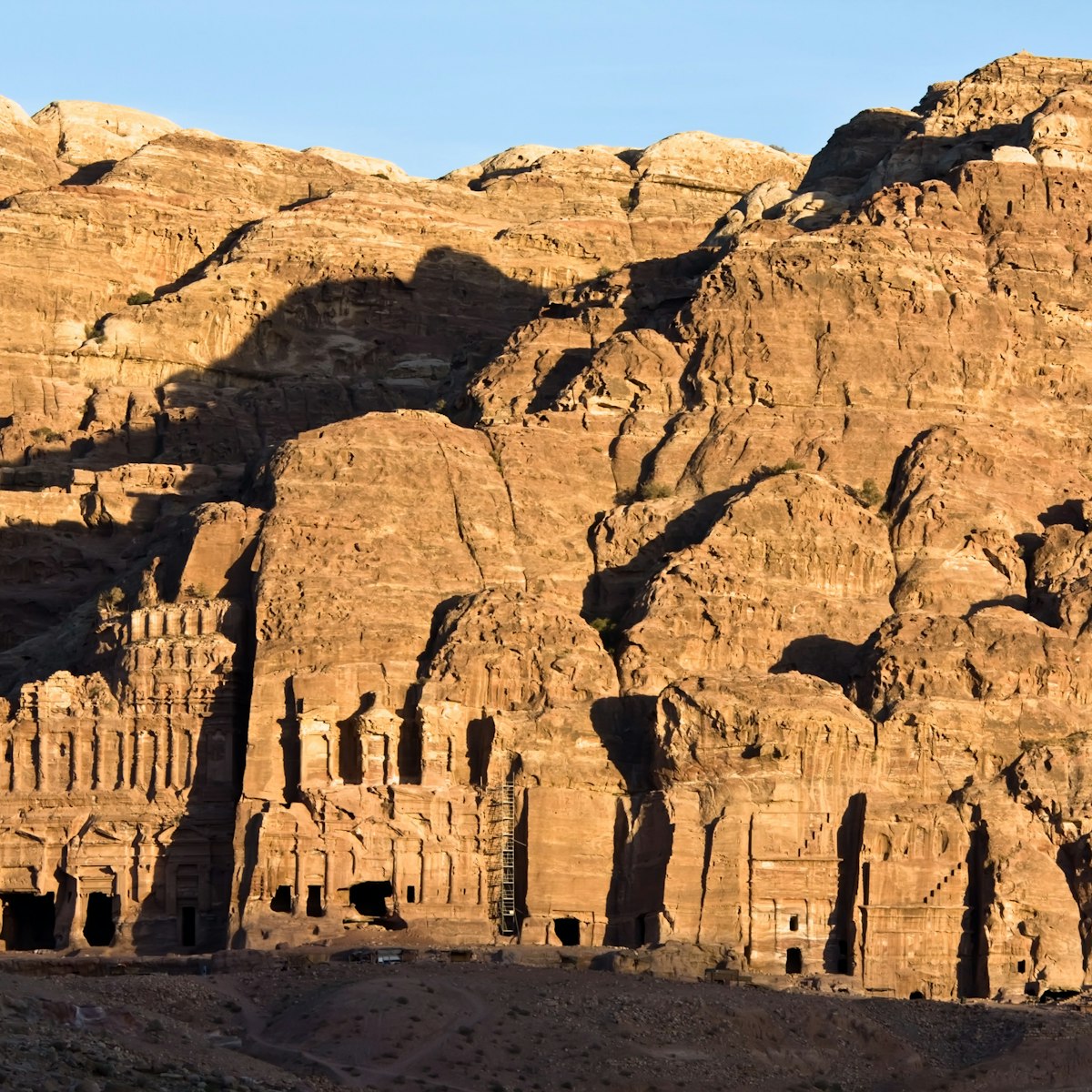Perched in a wild, remote landscape, Shobak Castle wins over even the most castle-weary visitor, despite being less complete than its sister fortification at Karak. It's especially imposing when seen from a distance, as it sits on a dramatic hill (formerly called Mons Realis, or the Royal Mountain), imposing its might on the surrounding countryside. Local guides, who really know their stuff, are available at the gate for around JD10.
Shobak was built by the Crusader king Baldwin I in 1115. Its defenders withstood numerous attacks from the armies of Saladin (Salah ad Din) before succumbing in 1189 (a year after Karak), after an 18-month siege. It was later occupied in the 14th century by the Mamluks, who built over many of the Crusader buildings. As you climb up from the entrance, there are some wells on the left. Soon after passing these, you’ll see the reconstructed church, one of two in the castle, down to the left. It has an elegant apse supported by two smaller alcoves. The room leading off to the west was the baptistery; on the north wall there are traces of water channels leading from above.
Return to the main path and turn left. After you pass under the arches, a door leads into the extensive market. Turn left and descend 375 steps into an amazing secret passageway that leads to a subterranean spring, finally surfacing via a ladder outside the castle, beside the road to Shobak town. Tread carefully, use a torch and don’t even think about coming down here if you’re claustrophobic. Alternatively, continue past the tunnel for 50m and you’ll pass a large two-storey building with archways, built by the Crusaders but adapted by the Mamluks as a school. At the northern end of the castle is the semicircular keep with four arrow slits. Outside, dark steps lead down to the prison. Head to the northeastern corner of the castle to see Quranic inscriptions, possibly dating from the time of Saladin, carved in Kufic script around the outside of the keep.
Following south along the eastern perimeter, you’ll pass the entrance to the court of Baldwin I, which has been partly reconstructed. Continuing south, you’ll pass some baths on the right. Off to the left is a reconstructed Mamluk watchtower. Just past the tower is the second church. In a room to the left as you enter, you can see above a door in the east wall a weathered carving of a Crusader cross. In the church proper, the arches have been reconstructed. Beneath the church are catacombs, which contain Islamic tablets, Christian carvings, large spherical rocks used in catapults and what is said to be Saladin’s very simple throne. From the catacombs, the path leads back to the gate.
There have been long-standing plans to bring the history of Shobak Castle to life with a local re-enactment company, but the tourism doldrums seem to have put this on hold. In the interim, staff dressed as Saladin's soldiers guard the entrance to Shobak sweetly and will happily pose for photos or engage visitors in mock sword fights.








